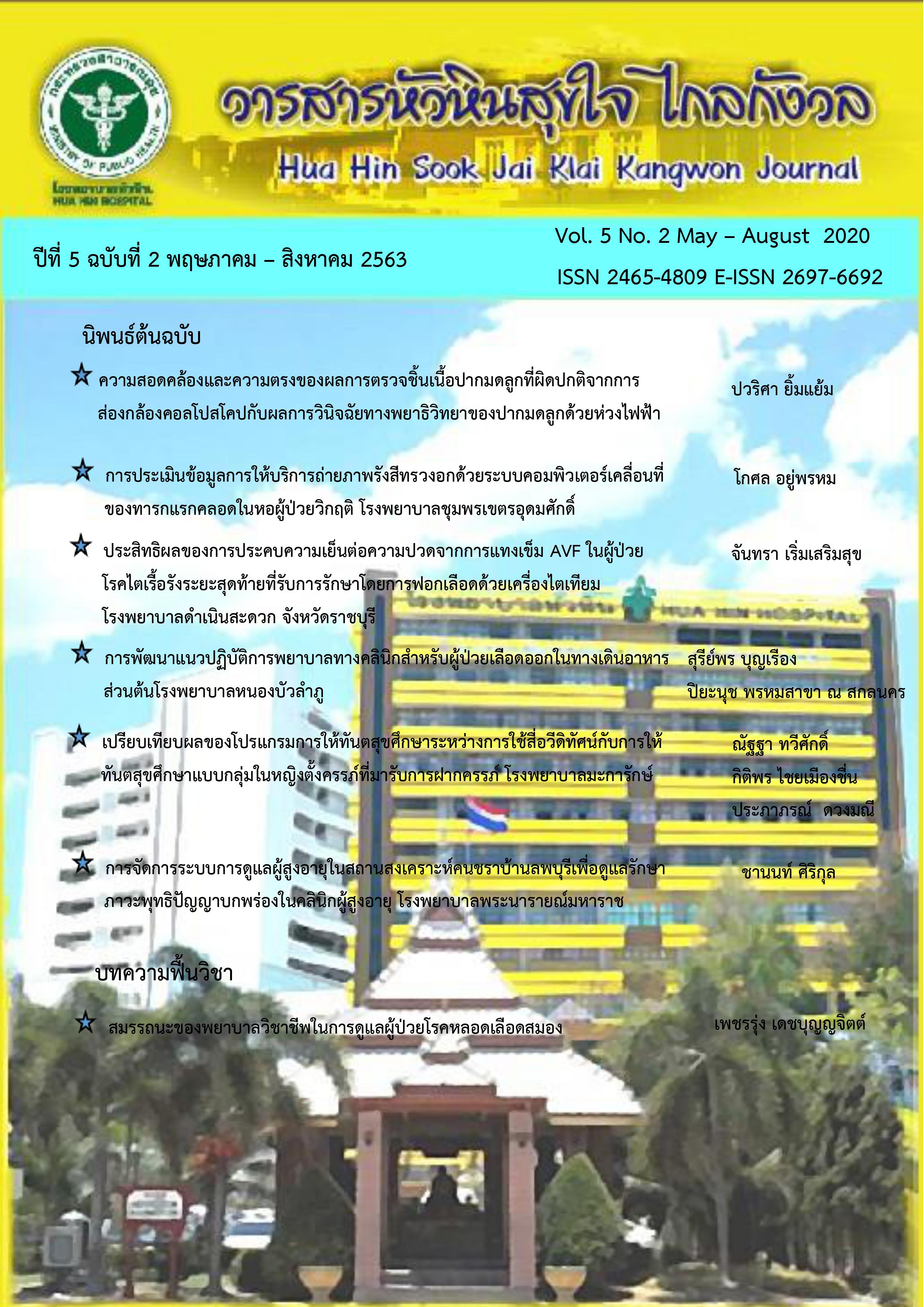Competency of Professional Nurses in Stroke units
Keywords:
Competency of Professional Nurses, Stroke patientsAbstract
Abstract
Stroke is a major public health problem worldwide. Although stroke is more common in the elderly, it can happen to anyone at any age. Major causes of stoke include hypertension, hyperlipidemia, atherosclerosis, heart disease and vascular abnormalities. Two types of stroke that result from these disease states are ischemic and hemorrhagic strokes. It interferes with the transport of blood, which carries oxygen and nutrients to brain cells. Causes symptoms of paralysis, paraplegia, or death. In the event of survival, it can result in permanent disability, loss of performance in various fields and becoming dependent on other people. It is necessary to have a caregiver when in a hospital from the beginning of admission until discharge. Therefore, a nurse caring for stroke patients needs to have knowledge, skills and experience in caring for stroke patients. And other features to provide quality nursing practice and safety for the patient.
Competency of professional Nurses are important personnel in a multidisciplinary team in caring for pre-hospital phase and in-hospital phase stroke patients, appropriate competency timely within the fastest and effective of stroke chain of survival and recovery, which should lead to positive outcomes.
Key word: Competency of Professional Nurses, Stroke patients
References
2. Bundhamcharoen K, Tangcharoensathien V. Burden of Diseases: Disability Adjusted Life Year and Health Adjusted Life Expectancy in Thailand. Journal of Health Science. 2016; 25(2):342-47. (in Thai).
3. Division of Non Communicable Disease. Annual report 2017: Department of Disease Control, Ministry of Public Health. Bangkok: Aksorn graphic and design publishing; 2017. (in Thai).
4. Tepsuwan J, Leelahagul V, Tosagulkeaw T. The Effects of Recurrent Prevention Program for Stroke Patients at a Tertiary Level Hospital in Nakhon Pathom Province. Journal of Thai Stroke Society. 2018; 17(1):5-18. (in Thai).
5. Januszewicz L, Buesch B. Neurologic alterations : Neurologic Disorders and Therapeutic Management. In: Urden LD, Stacy KM, Lough ME. Critical Care Nursing: Diagnosis and Management. 7th ed. Canada: Elsevier Mosby; 2018. p.649-62.
6. Mann T. Nervous System Disorders : Acute Stroke. In: Marino PL, editor. The ICU Book. 4th ed. Philadelphia, USA: Wolters Kluwer Health; 2014. p.831-43.
7. Rosdahl CB, Kowalski MT. Textbook of basic nursing. 11th ed. Philadelphia, USA: Wolters Kluwer Health; 2017.
8. Zomorodi M. Problems Related to Movement and Coordination : Stroke. In: Kwong J, Roberts D, editors. Medical-surgical nursing: assessment and management of clinical problems. 10th ed. St. Louis: Elsevier Inc.; 2017. P.1345-67.
9. Johnson AP, Crumlett HS. Critical Care Nursing Certification. USA: McGraw-Hill Inc.; 2018.
10. Jirapornkul C, Tungsrithong N, Nguanjairak R, Charerntanyarak L, Singhpoo K, Bradshaw P, Tiamkao S. Stroke knowledge among various suburban communities in Khon Kaen Province, Thailand. Journal of Public Health and Development. 2016;14(3):13-27. (in Thai).
11. Kuptniratsaikul V. Geriatric rehabilitation in Common health problem. Bangkok: P.A.Living ;2018. (in Thai).
12. Powers WJ, Rabinstein AA, Ackerson T, Adeoye OM, Bambakidis NC, Becker K, Tirschwell DL. Guidelines for the Early Management of Patients with Acute Ischemic Stroke: A Guideline for Healthcare Professionals from the American Heart Association/American Stroke Association. Pub Med. 2018; 49(3):46-110.
13. National Stroke Association. Act FAST [Internet]. 2016 [cited 2020 Mar 24]; Available from: http://www.stroke.org/understand-stroke/recognizing-stroke/act-fast.
Downloads
Published
How to Cite
Issue
Section
License
บทความที่ได้รับการตีพิมพ์ในวารสารหัวหินเวชสาร เป็นลิขสิทธิ์ของโรงพยาบาลหัวหิน
บทความที่ลงพิมพ์ใน วารสารหัวหินเวชสาร ถือว่าเป็นความเห็นส่วนตัวของผู้เขียนคณะบรรณาธิการไม่จำเป็นต้องเห็นด้วย ผู้เขียนต้องรับผิดชอบต่อบทความของตนเอง







